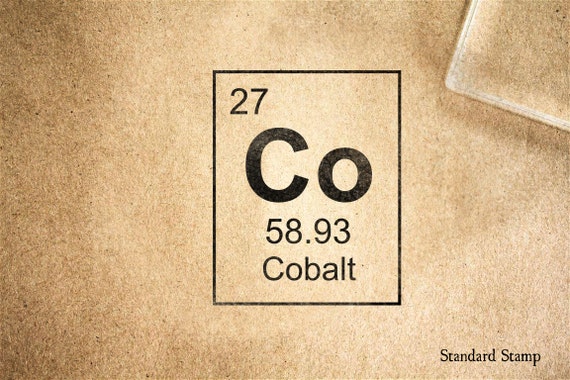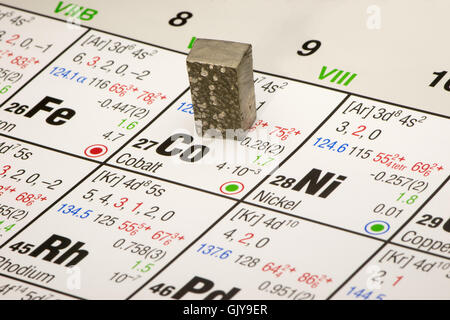

Metals containing HCP structures include beryllium, magnesium, zinc, cadmium, cobalt, thallium, and zirconium. However, unlike the fcc, it is not a Bravais lattice as there are two nonequivalent sets of lattice points. 2 page needed These are all transition metals in the d-block, considered to be some of the most rare of which.

Members of Group 9 include cobalt (Co), rhodium (Rh), iridium (Ir) and meitnerium (Mt). Cobalt (Co) chemical element Icon structure round shape circle grey, silver, black easily. Group 9, by modern IUPAC numbering, 1 is a group (column) of chemical elements in the periodic table. Hexagonal close packed (hcp) is one of the two simple types of atomic packing with the highest density, the other being the face centered cubic (fcc). cobalt stone on black isolated background. The middle layer contains three atoms nestled between the atoms of the top and bottom layers, hence, the name close-packed. The top and bottom layers contain six atoms at the corners of a hexagon and one atom at the center of each hexagon. In a hexagonal close-packed (HCP) arrangement of atoms, the unit cell consists of three layers of atoms. These metals possess low strength and high ductility. Metals containing FCC structures include austenite, aluminum, copper, lead, silver, gold, nickel, platinum, and thorium. This structure, along with its hexagonal relative (hcp), has the most efficient packing (74%). It is found in various ores and is important as a trace element in the. In a face-centered cubic arrangement, a unit cell contains (8 corner atoms × ⅛) + (6 face atoms × ½) = 4 atoms. Cobalt (chemical symbol Co, atomic number 27) is a hard, lustrous, silver-gray metal. Face-centered Cubic.In a face-centered cubic (FCC) arrangement of atoms, the unit cell consists of eight atoms at the corners of a cube and one atom at the center of each of the faces of the cube.These metals possess high strength and low ductility. Metals containing BCC structures include ferrite, chromium, vanadium, molybdenum, and tungsten.

The packing is more efficient (68%) than simple cubic and the structure is a common one for alkali metals and early transition metals. In a body-centered cubic arrangement, a unit cell contains (8 corner atoms × ⅛) + (1 center atom × 1) = 2 atoms. Periodic Table - Ptable - Properties ), or, order number 1 H Hydrogen 1. In a body-centered cubic (BCC) arrangement of atoms, the unit cell consists of eight atoms at the corners of a cube and one atom at the body center of the cube. The three most common basic crystal patterns are: There are 14 general types of such patterns known as Bravais lattices. It is this repeated pattern which control properties like strength, ductility, density, conductivity (property of conducting or transmitting heat, electricity, etc.), and shape. The forces of chemical bonding causes this repetition. A crystal lattice is a repeating pattern of mathematical points that extends throughout space. In metals, and in many other solids, the atoms are arranged in regular arrays called crystals. A possible crystal structure of Cobalt is hexagonal close-packed structure.


 0 kommentar(er)
0 kommentar(er)
